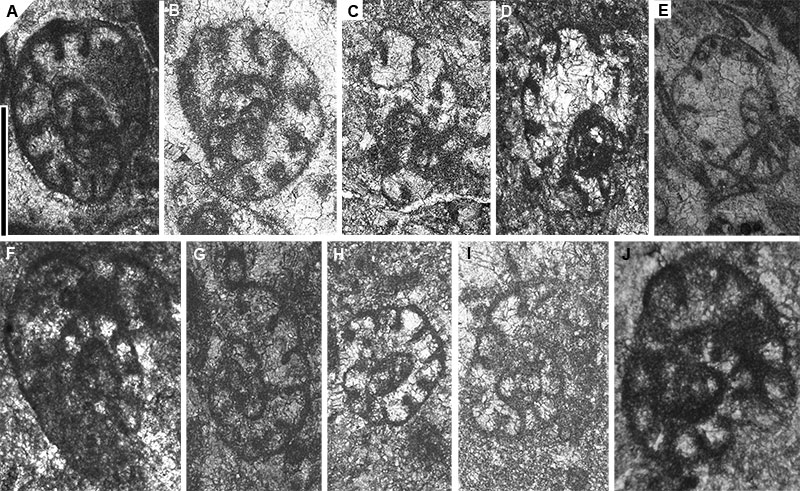FIGURE 1. Location map of the Bama isolated carbonate platform and the studied Shuidong (SD) and Kacai (KC) sections, Youjiang Basin, South China. A. Palaeogeographic map of South China and location of the Youjiang Basin and the Bama Platform (after Liu and Xu, 1994); green star represents the Gongchuan section previously studied (Liu et al., 2015). B. Geological map of the northern Bama Platform shows locations of the Mississippian sections studied.

FIGURE 2. Distribution of the Janischewskinidae in the Shuidong section. Red arrows correspond to the productive samples in Janischewskinidae, and black arrows to unproductive samples. Abbreviations: M – mudstone, W – wackestone, P – packstone, G – grainstone; m. – middle, low. – lower, Vis. – Viséan, Bashk. – Bashkirian, Stesh. – Steshevian, Protv. – Protvian, Sever. – Severokeltmian, J. – Janischewskina, B. cri. – Bradyina cribrostomata Zone, Edz – Eostaffellina decurta Zone, Ea - Ep – Eostaffellina actuosa - Eostaffellina protvaensis Zone, P. ag – Pseudostaffella antiqua grandis Subzone.

FIGURE 3. Distribution of the Janischewskinidae in the Kacai section. Legend and abbreviations as in Figure 2, and additionally, Alek. – Aleksinian, Tar. – Tarusian, Pr. – Protvian, up. – upper, Jdz – Janischewskina delicata Zone, Bc – Bradyina cribrostomata Zone.

FIGURE 4. Selected primitive Janischewskinidae with granular wall or with some agglutinated grains compared with a Mstiniidae. A. Bibradya grandis Strank, 1983, DPM-PC-TQ56-1250, Urswick Limestone Formation, Trowbarrow Quarry (N. England), late Asbian (late Viséan). Microgranular wall with rare agglutinated large grains in the third and sixth septa from the aperture. B. Bibradya moldensis (Strank in Somerville and Strank, 1984), HPU-SBD179-208, Shuidong section, Protvian (late Serpukhovian). Note the granular wall, rarely with small agglutinated grains. C. Holkeria avonensis (Conil and Longerstaey in Conil et al., 1980), DPM-PC-BS68-955, Park Limestone Formation, Barker Scar section (N. England), Holkerian (middle Viséan). Granular wall throughout the test with some large agglutinated grains in septa and outer wall. D. Cribrospira pansa Conil and Lys, 1965, DPM-PC-LF26-2162, Dalton Formation, Low Frith section (N. England), ‘upper’ Arundian (lower Viséan). Microgranular wall in the inner whorls with more granular aspect in the final whorls and with common small agglutinated grains. E. Cribrospira pansa, DPM-PC-WS36-1587, Dalton Formation, White Scar Quarry (N. England), ‘top’ Arundian (middle Viséan). Microgranular wall throughout the test, with large agglutinated grains in the wall of the final chambers. F. Bibradya inflata Strank, 1983, DPM-PC-TQ84-1954, Urswick Limestone Formation, Trowbarrow Quarry (N. England), late Asbian (upper Viséan). Microgranular wall throughout the test with some small agglutinated grains. (Scale bar equals 0.5 mm). [DPM- corresponds to the Palaeontological Collection in the Palaeontology Department of the Universidad Complutense de Madrid, PC- to the P. Cózar’s collection, the following number corresponds to the number of thin-section (e.g., TQ56, WS36,...), and the final number corresponds to the number of specimens].

FIGURE 5. Typical representatives of the genus Janischewskina recorded in South China. A‒B. Janischewskina minuscularia ? (Ganelina, 1956), HPU-SDB160-278, DPM-PC-SDB143-181. C. Janischewskina rovnensis (Ganelina, 1956), HPU-KC45-7. D. Janischewskina typica Mikhailov, 1939, HPU-KC107-3. E. Janischewskina isotovae Lebedeva in Grozdilova et al., 1975, HPU-KCT4-5. F. Janischewskina calceus (Ganelina, 1956), HPU-SDB160-277. G. Janischewskina delicata (Malakhova, 1956), HPU-KC75-378. H. Janischewskina gibshmanae Cózar et al. 2016, HPU-KC104-3. I. Janischewskina adtarusia Gibshman, Zaytseva and Stepanova in Gibshman et al., 2020, HPU-SDB283-1. (Scale bar = 1 mm). [HPU- corresponds to the Henan polytechnic University collections in the School of Resources and Environment, KC or SDB to the Kacai or Shuidong sections, respectively, followed by the number of the thin-section, and the final number corresponds to the number of specimens].

FIGURE 6. Typical representatives of the genus Cribrospira recorded in South China. A. Cribrospira mikhailovi Rauser-Chernousova, 1948c, HPU-SDB140-5. B. Cribrospira mira Rauser-Chernousova, 1948c, HPU-KC10-2. C. Cribrospira panderi Möller, 1878, HPU-SDB137-3. D. Cribrospira baliamadeni Pille, Vachard and Argyriadis in Pille et al., 2010, HPU-KC66-2. E. Cribrospira orbiculata (Ganelina, 1956), HPU-SDB144-9. F. Cribrospira lianxianensis Lin, 1981, HPU-SDB147-528. G‒H. Cribrospira paradenticulata sp. nov., G. HPU-SDB114-2 (holotype), H. HPU-SDB144-1. (Scale bar equals 1 mm, except for Figure G equals 0.5 mm).

FIGURE 7. Illustrations of the new species Cribrospira evoluta sp. nov. A. HPU-KC58-7 (holotype), B. HPU-KC77-1, C. HPU-SDB155-2, D. HPU-SDB181-4, E. HPU-SDB191-215. (Scale bar equals 1 mm).

FIGURE 8. Illustrations of Bibradya tenella (Ye et al., 1987) and the new species Bibradya densicamerata sp. nov. A‒F. Bibradya densicamerata sp. nov. A. HPU-KC90-406, B. HPU-KC75-488 (holotype), C. HPU-KC75-510, D. HPU-KC75-380, E. HPU-SDB155-188, F. HPU-KC75-503. G‒I. Bibradya tenella (Ye et al., 1987). G. HPU-SDB179-27, H. HPU-SDB182-7, I. HPU-SDB184-11. (Scale bar equals 1 mm).

FIGURE 9. Illustrations of the new species Bibradya primitiva sp. nov. A. HPU-KC81-399 (holotype). B. HPU-SDB179-291. C. HPU-SDB191-217. D. HPU-KC37-341. E. HPU-SDB176-6. F. HPU-SDB180-19. (Scale bar equals 0.5 mm).

FIGURE 10. Illustrations of the new species Bibradya maxima sp. nov. and Bibradya subita sp. nov. A‒E. Bibradya maxima sp. nov. A. HPU-KC75-389, B. HPU-KC75-392, C. HPU-SDB155-529, D. HPU-KC87-4 (holotype), E. HPU-KC75-41. F‒I. Bibradya subita sp. nov., F. HPU-SDB182-33, G. HPU-SDB184-301 (holotype), H. HPU-KC81-7, I. HPU-SDB173-533. (Scale bar equals 1 mm).

FIGURE 11. Typical representatives of the genus Parajanischewskina. A‒B. Parajanischewskina brigantiensis Cózar and Somerville, 2006, A. 3889-181, B. 3889-182, Limestone A8, top Iogla Formation, right bank of the Msta River, Western Moscow Basin (see Savitsky et al., 2015 for stratigraphical details). C‒D. Parajanischewskina brigantiensis, C. HPU-KC75-5, D. HPU-SDB143-16. E‒I. Parajanischewskina nautiliformis sp. nov., E. HPU-KC87-26, F. HPU-KC75-391 (holotype) G. HPU-KC87-487, H. HPU-KCT4-4, I. HPU-KC75-484. (Scale bar equals 1 mm).


